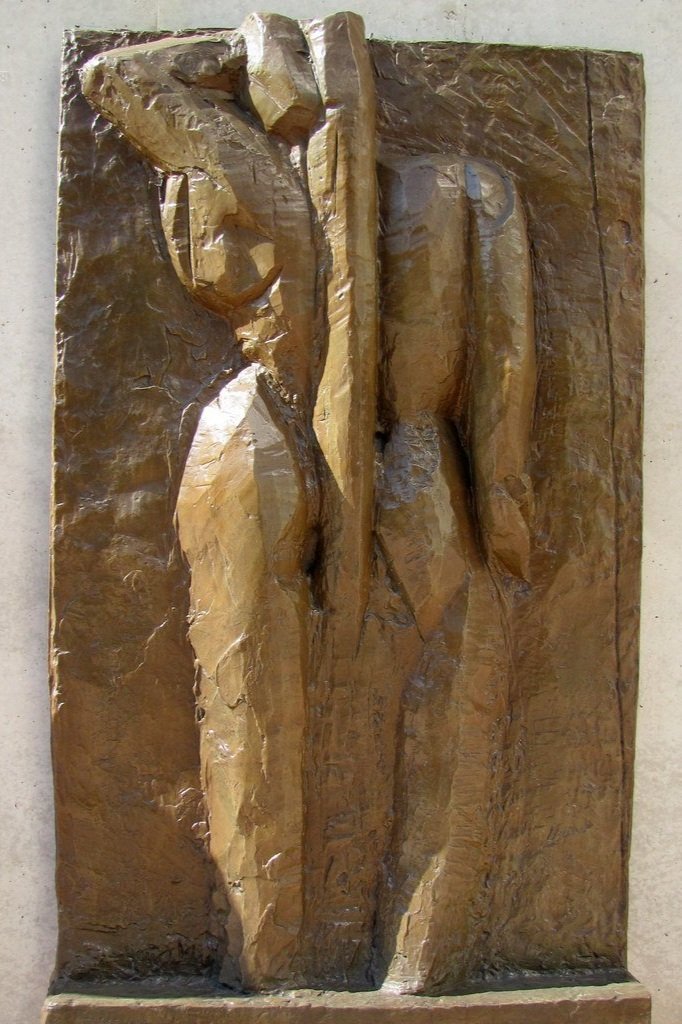HENRI MATISSE. BAS RELIEF: I–IV.
-
Henri Matisse
(French, b. 1869–d. 1954) -
From left to right (on a desktop) or top to bottom (on a mobile device):
Bas Relief: I
Bas Relief: II
Bas Relief: III
Bas Relief: IV
-
From left to right (on a desktop) or top to bottom (on a mobile device):
Bas Relief: I
1909Bas Relief: II
1913Bas Relief: III
1916–1917Bas Relief: IV
1930 -
Bronze
-
74 1/2 x 44 x 6 in. (189.23 x 111.76 x 15.24 cm)
-
Less lifelike, more real.
Four rectangular bronze panels hung on the far wall of the plaza in front of the Broad Art Center. Each panel is a rectangular piece of the same size (dimensions) with a relief depicting the backside of a nude woman. In each panel, the woman’s left arm is bent above her head as if resting on her forehead, and her right arm hangs along her side. The woman’s body is relaxed with her weight on her left leg, and her right leg bent in a position called “contrapposto” (opposite with weight resting on one leg). The 4 relief panels by Henri Matisse seem to be made as a series, but they were made as independent artworks over a period of 21 years. As you move to the right, each figure becomes bolder and blockier, less lifelike, and more abstract. Some artists believed that abstraction, though less visually representative, more closely captured an essence, idea, or truth. Abstraction was also a truer expression of the artist’s imagination, creativity, and unique vantage point of the world. These stylizations also led to important artistic movements such as Cubism and Expressionism.
An artist’s progression.
The oldest panel is on the left, made in 1909, and the most recent is on the right, made in 1930. Considering the 4 panels together, we see Matisse’s changing style as he returned, again and again, to focus on and simplify the forms found on the backside of the female nude body.
Walk from left to right to see how Matisse changes his representation of the same subject. In the 1st panel on the left, the woman’s hair is twisted into a knot at the nape of her neck, and her body swells with curves to represent the head, arms, a breast, back, buttocks, and legs. The woman’s knot of hair slowly unfurls from one panel to the next until it hangs straight down her back like a vertical column. In the 4th panel, the woman’s legs, arms, and hair are thick like tree trunks, topped with a simple oval head.
SPARK A CONVERSATION.
Try to pose like the contrapposto women represented in the panels.
Is this a comfortable position?
Why do you think the artist had his model pose like this?
Do you have a favorite panel? If so, why?
Matisse considered his sculptures to be extensions of his paintings.
Make a sketch of one or all 4 of the relief panels to explore the connection between the 3-dimensional sculptures and your 2-dimensional drawing.





